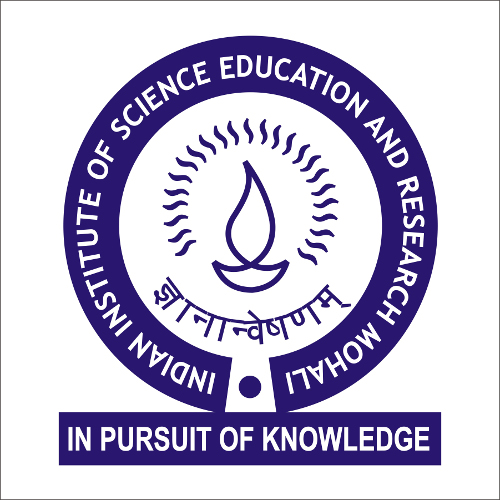|
Research Focus
I am an NMR spectroscopist whose research is poised at the interface of Physics and Biology. My current research interests include NMR Quantum Computing, Diffusion Studies using Gradient NMR, NMR of Nanomaterials, NMR Methodology Development and Biomolecular Structure and Dynamics Determination.
Quantum computing is a newly emergent field that exploits inherently quantum phenomena such as entanglement and parallelism to solve problems intractable on a classical computer. In NMR spin-1/2 particles are used to represent qubits, the basic units of quantum information. Our research in experimental NMR quantum computing focuses on experimental implementation of novel quantum algorithms, qudit-based quantum computing, experimental characterization and detection of quantum entanglement, exploring quantum contextuality, and preserving fragile quantum correlations using dynamical decoupling sequences. The super-Zeno effect can be used to freeze evolution of quantum states. Our group has achieved the first experimental demonstration of this effect on an NMR quantum computer. A qutrit is a three-level quantum system and is the simplest system to exhibit contextuality. A quantum algorithm was recently proposed to find the parity of a permutation using a single qutrit. Our group has demonstrated the first experimental exploitation of a single qutrit to achieve a computational speedup on an NMR quantum computer. Another recent work focuses on experimentally realizing a canonical form for general three-qubit states up to single-qubit unitaries. This form involves a nontrivial combination of Greenberger-Horne-Zeilinger (GHZ) and W-type maximally entangled states of three qubits.
Our group focuses on using NMR-based metabolomics experiments in conjunction with multivariate statistical analysis to evaluate the effects of environment on metabolism of humans, plants and insects. While it is known that high body mass index (BMI) plays a key role in the evolution of type-2 diabetes mellitus, the exact mechanism of its contribution is still not well understood. Our group has used NMR-based metabolomics to identify several potential biomarkers for the onset of diabetes in subjects with a high BMI. The plant metabolome is sensitive to variations in the growth environment, as evidenced by metabolomic profiling. Changes in the levels of specific metabolites can be quantified via high-resolution magic angle spinning (HR-MAS) nuclear magnetic resonance spectroscopy and can help identify key metabolic pathways related to environmental stress. We have studied the metabolic response of wheat seeds to fungicidal stress during germination. A delay in germination and a decrease in percentage germination were observed for fungicide-treated seeds. Extracts from the Carica papaya L. plant are widely reported to contain metabolites with antibacterial, antioxidant and anticancer activity. We have used NMR metabolite fingerprinting in conjunction with multivariate statistical analysis to analyze the metabolic profiles of papaya leaves and seeds in order to gain insights into their phytomedicinal constituents.
Pulsed field gradient spin echo (PFGSE) pulse sequences are used to measure diffusion by observing the attenuation of the NMR signal. The degree of attenuation is a function of the gradient pulse amplitude and occurs at a rate proportional to the molecular diffusion coefficient. We have designed several 3D heteronuclear DOSY pulse sequences to estimate the individual diffusion coefficients of components of a mixture. A new 3D diffusion-ordered heteronuclear NMR experiment COMPACT-IDOSY (cross-polarization optimized multisite polarized accelerated time internally encoded diffusion ordered spectroscopy) has been designed and experimentally implemented on a mixture of flavonoids. The pulse sequence uses a cross-polarization mixing period and diffusion encoding gradients internally incorporated into the coherence transfer interval of a long-range heteronuclear correlation experiment. Substantial reduction in experimental time, good sensitivity and excellent resolution of signal overlap lead to the accurate determination of translational diffusion coefficients of individual components in the mixture. Another novel diffusion-edited 3D NMR experiment incorporates a BEST-HMQC pulse sequence in its implementation and provides a more sensitive and less time-consuming alternative to standard 3D HMQC-DOSY experiments.
Cross-correlations are interference terms in multi-spin relaxation and contain inherent structural and dynamic information about the molecule. Our studies exploit cross-correlations between two dominant relaxation mechanisms: Chemical Shift Anisotropy (CSA) and Dipolar (DD) to gain information about molecular structure and dynamics in biomolecules and to distinguish between different structural forms of carbon nanotubes. Our work focuses on the characterization of the 19F CSA tensor in small molecules, through the combined use of quantum chemical methods and liquid-state NMR cross-correlated spin relaxation experiments. The results from ab initio methods and the liquid-state relaxation experiments match well.
|
|
Selected Publications
- NMR spectroscopy of the plant metabolome, Kavita Dorai, Invited Review Article, eMagRes, 9, 1-16, DOI 10.1002/9780470034590.emrstm1629 (2021).
- True experimental reconstruction of quantum states and processes via convex optimization, Akshay Gaikwad, Arvind, Kavita Dorai, Quantum Information Processing, 20:19, https://doi.org/10.1007/s11128- 020-02930-z (2021).
- NMR investigation of the thermogelling properties, anomalous diffusion and structural changes in a Pluronic F127 triblock copolymer in the presence of gold nanoparticles, Jyotsana Ojha, Raju Nanda and Kavita Dorai, Colloid and Polymer Science, https://doi.org/10.1007/s00396-020-04740-2 (2020).
- Simulating the effect of weak measurements by a phase damping channel and determining different measures of bipartite correlations in nuclear magnetic resonance, Akanksha Gautam, Varad R. Pande, Amandeep Singh, Kavita Dorai, Arvind. Physics Letters A, 384, 126760 (2020).
- Experimental Detection of Qubit-Ququart Pseudo-Bound Entanglement using Three Nuclear Spins, Amandeep Singh, Akanksha Gautam, Arvind and Kavita Dorai, Physics Letters A, 383, 1549-1554 (2019).
- Structural and dynamical aspects of PEG/LiClO4 in solvent-mixtures via NMR spectroscopy, Satnam Singh, Raju Nanda and Kavita Dorai, Magnetic Resonance in Chemistry, 57, 412-422, (2019)
- NMR-based investigation of the altered metabolic response of Bougainvillea spectabilis leaves exposed to air pollution stress during the circadian cycle, Sumit Mishra, Navdeep Gogna and Kavita Dorai, Environmental and Experimental Botany, 164, 58-70 (2019).
- Experimentally identifying the entanglement class of pure tripartite states, Amandeep Singh, Kavita Dorai and Arvind, Quantum Information Processing, (2018), 17, 334.
- Experimental classification of entanglement in arbitrary three-qubit pure states on an NMR quantum information processor, Amandeep Singh, Harpreet Singh, Kavita Dorai and Arvind, Physical Review A, (2018), 98, 032301.
- Evolution of tripartite entangled states in a decohering environment and their experimental protection using dynamical decoupling, Harpreet Singh, Arvind and Kavita Dorai, Physical Review A, 97, 022302 (2018).
- Fast profiling of metabolite mixtures using chemometric analysis of a speeded-up 2D heteronuclear correlation NMR experiment, Rakesh Sharma, Navdeep Gogna, Harpreet Singh and Kavita Dorai, RSC Advances, 7, 29860 (2017).
|

